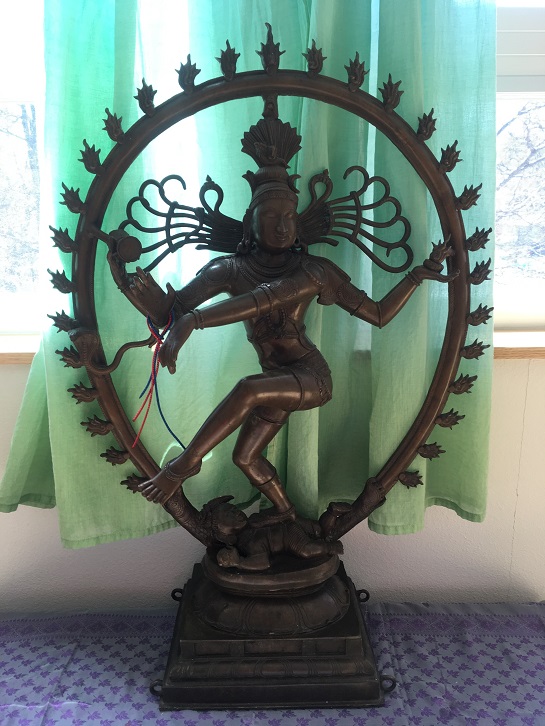I generally go with my intuition on what needs to be said at a particular time, and this week it is also what is up for me right now: FEAR. I’ve been facing a number of challenges from the physical (nothing life-threatening, no worries!), to the mental and emotional, in addition to the existential crises we are facing politically and environmentally, and several other situations where I’m seeing it in myself and others. It is a lot to hold, and I’m sure some of you are similarly challenged.
Unlike many of the teachings we consider, I don’t have a specific text to point to this time, but fearlessness is alluded to in the tradition through many of the images of the Gods and Goddesses, as well as the Buddha. They raise a hand with the palm facing out, in a gesture known as abhaya mudra. It literally means “no fear,” fearlessness, or have no fear.
When I experience fear, it is important first of all to see and acknowledge it. So many times we’re driven by fear unconsciously, and it gets projected inappropriately on to someone or something else. Next it is a matter of assessing whether it is appropriate, because sometimes it is and we need to protect ourselves.
Often the fear boils down to a fear of uncertainty, of not knowing what is next, or wanting to control the situation and not being able to, fear of not being capable, failure, imperfection, having to let go of something or someone, or simply having to deal with something unpleasant. Often we are filled with fear when we’re on the cusp of something, starting a new enterprise, dealing with a health challenge, or a breakthrough in our personal or spiritual development. As I assess my fear, I often turn toward analyzing and processing, with myself or another, and that can be important as well.
But ultimately I’ve found my practices have helped me the most. My yoga asana practice can be incredibly useful. I faced fear many times approaching particular poses and I know I can breathe through it. A greater awareness of my breath allows me to more readily notice fear arising and breathe deeply since I’ve established that pattern over many years of practice, which physically relaxes me. Often when I get on my mat, breathe and move the energy through me, the fear dissipates.
I’ve learned philosophically how so much of fear is due fundamentally to the human condition of manifesting into a limited individuality with the associated occlusions which can lead to a feeling of lack, of feeling less than, inadequate, incapable, and so on. Through my practices, I am slowly removing the occlusions to my heart so that sourceplace of courage is more accessible. I also find myself able to keep a larger perspective on things, to keep in mind my svadharma, my life’s purpose, and to not let the fear take over from pursuing what I must.
One of the teachings I recently shared was about silence, and it actually takes a lot of courage to be quiet. Many people fill their awareness with stimuli of various sorts precisely so they do not have to look inside. It takes courage to close your eyes and look deep inside to see what is hidden there. It can be scary to see how much of our experience is of our own creation, how repetitive our thoughts and actions can be, and it requires courage to confront these realities of our inner workings. But as well, having mustered the courage to go inside, we discover the luminosity of our innermost self, the light of our heart which can give us courage and guide us through fearful situations.
Courage is something we can consciously muster, but with continued meditation, it also arises more spontaneously as our awareness becomes more clarified, and as we’ve gone through the process of moving through these uncomfortable shifts that often occur over the course of years of sadhana. In fact, we may even invite in those issues we need to deal with in order to move further along the path.
As we sit in meditation we see the arising of habitual thought patterns of different types, including fear, and we work with them so we are no longer held captive by them. This eventually allows us to mindfully observe and do the same on a moment-by-moment basis as we move through our everyday life.
So my sense is that abhaya mudra acknowledges that fear is part of the process of transformation on all levels of our life, but particularly in the deepest layers of our being. The gesture reminds us that ultimately we are bigger than our fear, since we are in fact divine ourselves, and we can harness the greater energy of the heart to face whatever is manifesting in both or inner and outer worlds.



